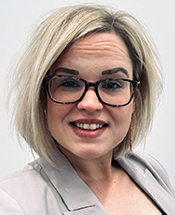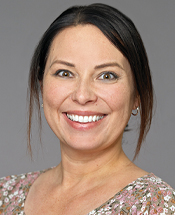 Value-based care, or population health management, has been a hot topic in health care for some time now, but how to integrate the care model into the long term care setting is just beginning to evolve into something tangible for skilled nursing facilities (SNFs), assisted living (AL) communities, and related providers.
Value-based care, or population health management, has been a hot topic in health care for some time now, but how to integrate the care model into the long term care setting is just beginning to evolve into something tangible for skilled nursing facilities (SNFs), assisted living (AL) communities, and related providers.
Enter into the conversation assistance from the American Health Care Association/National Center for Assisted Living’s (AHCA/NCAL) provider-owned networks team, whose purpose is to help providers explore integrated networks to create efficiencies in care and cost as well as to pursue business ventures including quality-based reimbursement and value-based contracts with managed care organizations (MCOs) (see outline of the model).
Katie Colgan, AHCA/NCAL executive director of integrated networks, said provider-owned networks help SNFs and other long term care providers to drive substantial opportunities for innovation in delivery of care, to design and implement population health management models, to reduce and eliminate burdens such as audits and authorizations, and to achieve reimbursement for value under a continuum of risk options.
“These options are critical now more than ever to help providers, payers, and policymakers design and implement new care models as fee-for-service payments shift to value-based care based on quality outcomes,” she said.
The point of value-based care or managed care principles is to offer heightened preventive care to patients/residents and get ahead of possibly more serious developments. This type of care is encouraged by the federal government’s quality measures, giving SNFs and AL communities a set of goals to beat or achieve. SNFs, for example, are measured on rehospitalizations, fall prevention, and curbing the use of antipsychotics, among others.
Why a Networks Solution Now?
Colgan said around 10 years ago, the AHCA Board of Directors started to look at the concept of provider-owned networks and the feasibility of what the association could achieve for its members in the space. The point, she said, was to find a way to help provider members improve quality in a managed care environment and prepare for value-based models.
 Since that time, managed care has only increased its presence, and by 2019, it was even more apparent that long term care providers could utilize assistance in better positioning themselves for the opportunities in shared savings and value-based care programs.
Since that time, managed care has only increased its presence, and by 2019, it was even more apparent that long term care providers could utilize assistance in better positioning themselves for the opportunities in shared savings and value-based care programs.
Thus, the provider-owned network solution was born.
“It’s a way for us to bring together a group of providers in a new way to focus to improve on quality and contracts and work with managed care plans, with all of us working toward the same goal,” she said. “What we have been able to do is put in place a number of brand-new relationships with managed care plans. So, we are working together to improve outcomes, improve the quality of life for residents, decrease administrative burdens, and improve reimbursement options because we create savings for the health care systems.”
With AHCA/NCAL’s assistance to vet and develop these networks, member providers now own their own integrated networks in 11 states: Florida, Indiana, Iowa, Kentucky, Louisiana, Massachusetts, Michigan, Minnesota, Nebraska, North Carolina, and Ohio, Colgan said, with plans to add additional states as makes sense.
Each of the states has a well-developed core of providers with healthy managed care penetration. States that do not have these two factors may not be good candidates for provider-owned networks at this point in time.
Colgan said the actual implementation of managed care contracts with providers drills down into what each long term care group views as their priority care issue, in collaboration with the MCOs. “Together the network providers and the MCO will come in and introduce a pilot, for instance, and focus on reducing falls. At the direction of the providers, the network will then go into a building with a high fall rate and educate and try out solutions that will help bring those numbers down,” she said.
SNFs will get to collaborate with the health plans (managed care) in new ways, and health plans will see the providers as partners seeking to share in savings from the improved care by reducing falls, per the example.
“This really puts us in the long term care space in the driver’s seat,” Colgan said. “Before, managed care was treating SNFs as ancillary services, but networks change that perception so that the plans work with SNFs and ALs like they do with hospitals and physician groups.”
Indiana Health Care Quality Partners
Colgan said a prime example of how the provider-owned network model has worked well is in Indiana. In 2022, Indiana providers came together to form Indiana Quality Health Care Partners (INHCQP), motivated by the state’s impending move to managed long term services and supports (mLTSS). Over 300 facilities came together to form INHCQP, and as a result, the payers bidding for the mLTSS business with the state were highly motivated to partner with the network to create new shared savings models.
Colgan emphasized that one mLTSS payer specifically stated in their written bid to Indiana officials that they planned to create shared savings with INHCQP providers. After the final plans were chosen and mLTSS began in 2024, all three payers committed to shared savings models with INHCQP.
According to Colgan, in 2025, the provider owners of INHCQP are eligible for over $3 million of shared savings, which otherwise would not have been available if the network was not formed, offering a vehicle for the providers to collectively demonstrate their quality improvement to the payers. The shared savings are available if providers meet benchmarks in key quality areas, including:
- Decreasing inpatient hospitalization days
- Decreasing emergency room (ER) visits
- Decreasing readmissions
- Decreasing catheter use
- Decreasing use of antipsychotics
- Decreasing falls with major injury
- Increasing vaccines
- Decreasing pressure ulcers
In implementing the shared savings program, INHCQP was able to work with the payer to optimize how each building participates in the program, leveraging the volume of the network to partner within the entire group of over 300 buildings to create the best environment for quality improvement and success in the program.
According to Colgan, this is only one opportunity with one payer, and the INHCQP network is developing similar programs with the other two mLTSS plans to help create consistency in quality measurement across residents in the buildings of provider members. This way, provider members can focus on their individual resident needs, and network staff can support program development and achievement of consistent quality goals across many buildings.
Nebraska Targets Advance Care Planning
Nebraska shows that any number of priority issues can arise when the provider network model is active. In Nebraska, state long term care stakeholders held a Fall 2024 Advance Care Planning In-Person Education event, which addressed how best to keep hospital readmissions low.
Through high-level outreach with its members, the state AHCA/NCAL affiliate identified that network members would benefit from education on advance care planning, resulting in 80 individuals attending the full-day workshop led by David Gifford, MD, AHCA/NCAL chief medical officer (CMO) and network CMO. Workshop topics included end-of-life trajectory, surplus safety measures, and managing dementia behaviors.
“Being CMO for Vetter Senior Living, I was really impressed that Dr. Gifford took the time and effort to come in person to speak with us in Nebraska,” said Gary Anthone, MD, CMO, Vetter Health Services, in Elkhorn, Neb. “Not knowing him as well as some of my Vetter team members did, I found him to be truly humble and approachable. Having someone who has ‘lived’ senior care speak to us in person about improving quality let me know that the NHCA [Nebraska Health Care Association] and the NHCQP leadership teams are serious about what they stand for. Vetter is striving to take senior care to the next level.”
The advance care planning session delivered valuable information, he said, since it is important to remember to treat patients with dignity, instead of thinking of them as revenue generators. “This is what I think will impact the care our residents will benefit from.”
 Chay Indra, senior director of clinical operations at Vetter Senior Living, said the focus on advance care planning gets to the clinical issues involved when a resident does not always want to be treated in a hospital setting, making it important to mitigate negative outcomes from falls or for those with dementia to limit interventions.
Chay Indra, senior director of clinical operations at Vetter Senior Living, said the focus on advance care planning gets to the clinical issues involved when a resident does not always want to be treated in a hospital setting, making it important to mitigate negative outcomes from falls or for those with dementia to limit interventions.
“Dr. Gifford looked at the country as a whole when he presented to us, a lot of different buildings and different organizations. And he gave us the best information from that research. One area that stood out is facility huddles—making sure there is clinical communication on a daily basis plays a role in reducing ER visits,” Indra said.
When discussing advance care planning, providers spend a lot of time communicating with families and residents about the type of care they want.
“A family member may say, ‘OMG, my mom is not feeling well, so send her to the hospital.’ But that family member may not know we have a lot of services we can provide in the facility. This is education needed for the families,” she said. “We can do IV fluids and testing and monitoring in the building and report back to a doctor before possibly sending a resident to the ER.”
Other situations can lead to education from the network model, Indra said. “Falls are a big area to cover. We want to promote independence but still be safe. Why a person falls is important; it could be meds or the oxygen tubing that gets in the way when walking. It is all about being more intentional with the managed care quality measures,” she said.
Dr. Gifford indicates that “networks have the ability to bring providers together to align quality goals with payment, and providers with payers, so that all can work collectively to improve outcomes for long term care residents,” describing networks as “one of the most exciting initiatives to impact nursing facility quality” in the past several decades.
Ohio Pilots Nursing Program
In Ohio, the Ohio Health Care Association Quality Partners (OHCAQP) Network has created a collaboration with a managed Medicaid health plan for an innovative nurse practitioner program that Leah Elliott, clinical care manager at OHCAQP, called a “transformative” effort to bring quality improvements and cost efficiencies to long term care providers operating in the state, with support from a major national Medicaid payer.
 One of the leaders of the pilot program on the ground level is Caprice Scherpf, the director of nursing services at Majestic Care of Middletown, Ohio. She has been in health care for two decades, with 17 of those years as a nurse. She said the nurse practitioner pilot program focuses on improved quality outcomes brought on by the attention an additional clinician provides.
One of the leaders of the pilot program on the ground level is Caprice Scherpf, the director of nursing services at Majestic Care of Middletown, Ohio. She has been in health care for two decades, with 17 of those years as a nurse. She said the nurse practitioner pilot program focuses on improved quality outcomes brought on by the attention an additional clinician provides.
“It is another opportunity for extra clinical oversight and collaboration. We are intent on managing chronic conditions, minimizing falls and pressure ulcers, and helping to prevent anything that might result in a drastic decline in functional abilities. Having the nurse practitioner as part of this team [in the managed care setting] is about asking how we can do our best for the resident in our interventions,” she said.
Scherpf’s building is one of the first to take part in the nurse practitioner pilot program, and she has nothing but praise for the health insurer, calling them a wonderful group to work with. She notes that communication is a key between the nurse practitioner and the facility staff.
“There is a high level of collaboration, and the nurse practitioner has a wonderful bedside manner and takes the extra time for residents, really advocating for them,” Scherpf said.
About 35 out of the 135 residents in the building now have the nurse practitioner benefit.
 This means there are a fair number of “hands in the pot” when it comes to care being provided for residents under managed care contracting, she said, which makes it important to know the protocol for which clinician does what in the decision-making process.
This means there are a fair number of “hands in the pot” when it comes to care being provided for residents under managed care contracting, she said, which makes it important to know the protocol for which clinician does what in the decision-making process.
“When there is a change in condition of a resident, the nurse practitioner is notified first and works with the primary care provider ultimately on a course of action. It is the same process we see for the other managed care company in the building,” Scherpf said.
The pilot is thus far open-ended, but she hopes the nurse practitioner is in the building as long as possible. “It has given an extra layer of review and has paid off for residents and families,” she said. “We are seeing positive results and will be documenting them as we go along.”
Patrick Connole is a veteran journalist and a former senior writer and editor for Provider, where he gained experience reporting on the long term care profession. Connole previously worked for Dow Jones, Reuters, and McGraw-Hill covering business news.